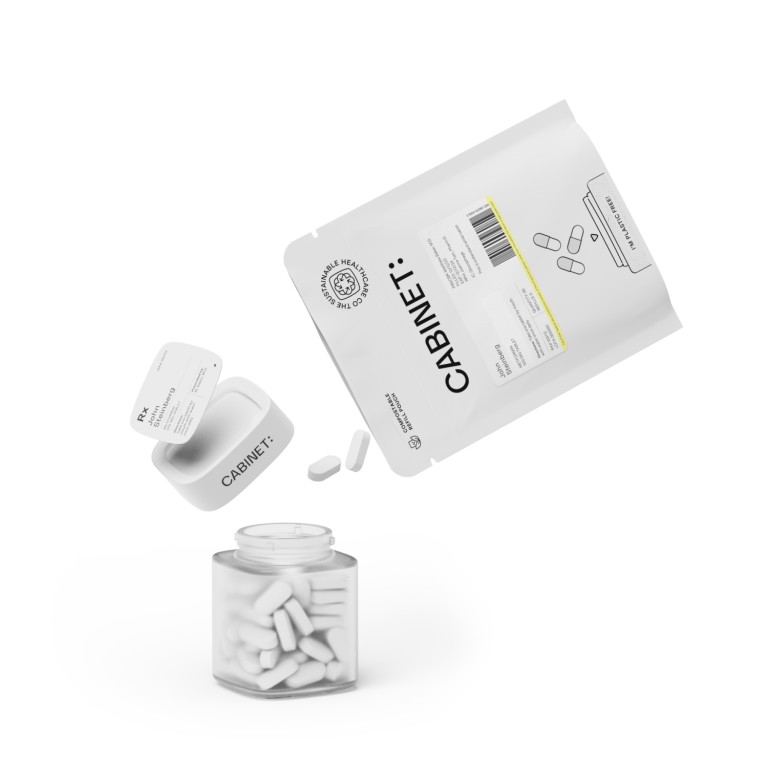Strep throat is a common bacterial infection that affects the throat and tonsils. It is caused by the group A Streptococcus bacteria, also known as Streptococcus pyogenes. If you or someone you know has been diagnosed with strep throat, you may be wondering how long it is contagious and how to prevent its spread. In this article, we will explore the contagious nature of strep throat, its duration, and strategies for prevention and control.
Understanding Strep Throat
Before diving into the contagious period of strep throat, it is important to have a clear understanding of what exactly it is. Strep throat is an infection that primarily affects the throat and tonsils. It is characterized by symptoms such as sore throat, difficulty swallowing, fever, and swollen lymph nodes in the neck. The infection is typically caused by the bacteria streptococcus pyogenes, which can be transmitted from person to person through respiratory droplets.
What is Strep Throat?
Strep throat, also known as streptococcal pharyngitis, is a bacterial infection that primarily affects the throat and tonsils. It is caused by the bacterium Streptococcus pyogenes, commonly referred to as group A streptococcus. This bacterium is highly contagious and can spread easily from person to person through respiratory droplets.
When an infected person coughs, sneezes, or even talks, tiny droplets containing the streptococcus bacteria can be released into the air. These droplets can then be inhaled by others, leading to the transmission of the infection. Additionally, streptococcus bacteria can also be spread through direct contact with an infected person's saliva or nasal secretions.
Once the streptococcus bacteria enter the body, they can attach themselves to the lining of the throat and tonsils, causing inflammation and irritation. This leads to the characteristic symptoms of strep throat, such as a severe sore throat and difficulty swallowing.
Common Symptoms of Strep Throat
Recognizing the symptoms of strep throat is crucial for early diagnosis and timely treatment. Common symptoms include a severe sore throat, pain or difficulty swallowing, fever, swollen lymph nodes in the neck, and red and swollen tonsils with white patches or streaks of pus. Some individuals may also experience headache, stomach pain, or a red rash known as scarlet fever.
It is important to note that not everyone infected with streptococcus bacteria will develop symptoms. Some individuals may be carriers of the bacteria, meaning they can transmit it to others without experiencing any symptoms themselves. This is why strep throat can sometimes spread unknowingly, as carriers may not realize they are infected.
If left untreated, strep throat can lead to complications such as tonsillitis, sinusitis, ear infections, and even rheumatic fever. Therefore, it is crucial to seek medical attention if you suspect you or someone you know may have strep throat.
The Contagious Nature of Strep Throat
Understanding how strep throat spreads and who is most at risk can help in devising effective prevention strategies.
Strep throat, also known as streptococcal pharyngitis, is a highly contagious bacterial infection that primarily affects the throat and tonsils. It is caused by the group A streptococcus bacteria, specifically Streptococcus pyogenes. This infection can spread rapidly within communities, especially in close quarters such as schools, households, and workplaces.
How Strep Throat Spreads
Strep throat is primarily transmitted through respiratory droplets. When an infected individual coughs, sneezes, or even talks, tiny droplets containing the streptococcus bacteria are released into the air. These droplets can then be inhaled by individuals in close proximity, leading to the transmission of the infection. The bacteria can also survive on surfaces for a short period, making it possible to contract strep throat by coming into contact with contaminated objects or surfaces and then touching your mouth, nose, or eyes.
Once the streptococcus bacteria enter the body, they can colonize the throat and tonsils, causing inflammation and the characteristic symptoms of strep throat, such as sore throat, difficulty swallowing, fever, and swollen lymph nodes.
It is important to note that not everyone who comes into contact with the streptococcus bacteria will develop strep throat. Some individuals may only experience mild symptoms or remain asymptomatic carriers, meaning they can transmit the bacteria to others without showing any signs of infection.
Who is Most at Risk?
Strep throat can affect individuals of all ages, but certain groups may be more susceptible to contracting the infection. Young children between the ages of 5 and 15 are particularly vulnerable due to their developing immune systems and frequent exposure to other children in school or daycare settings. Additionally, individuals with weakened immune systems, such as those with chronic illnesses or undergoing immunosuppressive treatments, are at a higher risk of developing strep throat.
Furthermore, individuals who come into close contact with infected individuals, such as family members, classmates, or healthcare workers, have an increased risk of contracting strep throat. This is because the streptococcus bacteria can easily spread through direct contact with respiratory droplets or contaminated surfaces.
It is worth mentioning that practicing good hygiene habits can help reduce the risk of contracting and spreading strep throat. Regularly washing hands with soap and water, covering the mouth and nose when coughing or sneezing, and avoiding close contact with infected individuals can significantly lower the chances of transmission.
In conclusion, understanding the contagious nature of strep throat and the individuals most at risk can aid in implementing effective prevention measures. By promoting awareness, practicing good hygiene, and seeking prompt medical attention when necessary, we can collectively work towards reducing the incidence and impact of strep throat within our communities.
Duration of Strep Throat Contagiousness
The contagious period of strep throat is an important consideration when it comes to preventing its spread and ensuring the well-being of those affected.
Strep throat, also known as streptococcal pharyngitis, is a bacterial infection caused by the Streptococcus pyogenes bacteria. It primarily affects the throat and tonsils, causing symptoms such as sore throat, fever, and swollen lymph nodes.
When an individual contracts strep throat, they can become contagious and spread the bacteria to others. Understanding the duration of contagiousness is crucial in implementing effective preventive measures and seeking appropriate treatment.
When Does Contagious Period Start?
In most cases, individuals with strep throat become contagious approximately 24 to 48 hours before the onset of symptoms. During this pre-symptomatic period, they may unknowingly spread the bacteria to others through respiratory droplets.
Respiratory droplets containing the Streptococcus pyogenes bacteria can be released into the air when an infected person coughs, sneezes, or even talks. These droplets can then be inhaled by others, leading to the transmission of the bacteria and subsequent infection.
It is worth noting that not all individuals infected with strep throat will display symptoms, which makes early detection and prevention challenging. Asymptomatic carriers can still spread the bacteria, contributing to the overall contagiousness of the infection.
When Does Contagious Period End?
The contagious period of strep throat lasts until at least 24 hours after initiating antibiotic treatment. It is essential to complete the prescribed course of antibiotics to ensure that the bacteria are eliminated from the body and to prevent the recurrence of infection.
Antibiotics are commonly used to treat strep throat and are effective in killing the Streptococcus pyogenes bacteria. However, stopping the antibiotic treatment prematurely can lead to the survival of some bacteria, increasing the risk of relapse and prolonging the contagious period.
Failure to complete the full course of antibiotics may result in incomplete eradication of the bacteria and a prolonged contagious period. It is crucial to follow the healthcare provider's instructions and continue taking the antibiotics for the recommended duration, even if symptoms improve before completing the treatment.
Additionally, practicing good hygiene habits, such as covering the mouth and nose when coughing or sneezing, regularly washing hands, and avoiding close contact with individuals who have strep throat, can help reduce the spread of the bacteria and minimize the contagious period.
Overall, understanding the duration of strep throat contagiousness is vital in preventing its transmission and safeguarding the health of individuals. Early detection, proper treatment, and adherence to preventive measures are key in controlling the spread of this bacterial infection.
Prevention and Control of Strep Throat
Preventing the spread of strep throat is crucial for reducing the incidence and ensuring the well-being of individuals. Employing hygiene practices and understanding the role of antibiotics can play a significant role in preventing and controlling this contagious infection.
Hygiene Practices to Prevent Strep Throat
Adopting simple yet effective hygiene practices can significantly reduce the risk of contracting and spreading strep throat. These include frequently washing hands with soap and water, covering the mouth and nose with a tissue or elbow when coughing or sneezing, and avoiding close contact with individuals who have confirmed or suspected strep throat. Additionally, regularly cleaning and disinfecting frequently touched surfaces can help minimize the spread of the bacteria.
Importance of Antibiotics in Controlling Strep Throat
Antibiotics are the mainstay of treatment for strep throat, as they help eliminate the bacteria and reduce the contagious period. It is important to note that strep throat is primarily caused by bacteria and not viruses, and antibiotics are effective against bacterial infections. Prompt medical attention and adherence to the prescribed antibiotic regimen are essential for controlling the infection and preventing its spread to others.
Dealing with Strep Throat
While prevention is ideal, it is inevitable that some individuals will contract strep throat at some point. In such cases, knowing how to alleviate symptoms and when to seek medical attention is crucial.
Home Remedies for Strep Throat
Home remedies can provide temporary relief from the discomfort caused by strep throat. Gargling with warm salt water, drinking warm fluids such as tea or soup, and using throat lozenges can help soothe a sore throat. However, it is important to remember that these remedies are not a substitute for medical treatment. They can help alleviate symptoms but will not cure the infection.
When to Seek Medical Attention
If you suspect that you or a loved one has strep throat, it is important to seek medical attention promptly. A healthcare professional can perform a throat swab to confirm the diagnosis and prescribe the appropriate antibiotic treatment. Early treatment not only helps alleviate symptoms but also reduces the contagious period, thereby preventing the spread of infection to others.
In conclusion, strep throat is a highly contagious bacterial infection that primarily affects the throat and tonsils. Understanding the contagious nature of strep throat, its duration, and implementing appropriate prevention and control strategies are crucial for minimizing its spread and ensuring the well-being of individuals. By adopting proper hygiene practices, seeking timely medical attention, and adhering to prescribed antibiotic regimens, we can collectively work towards reducing the incidence of strep throat and promoting a healthier community.








